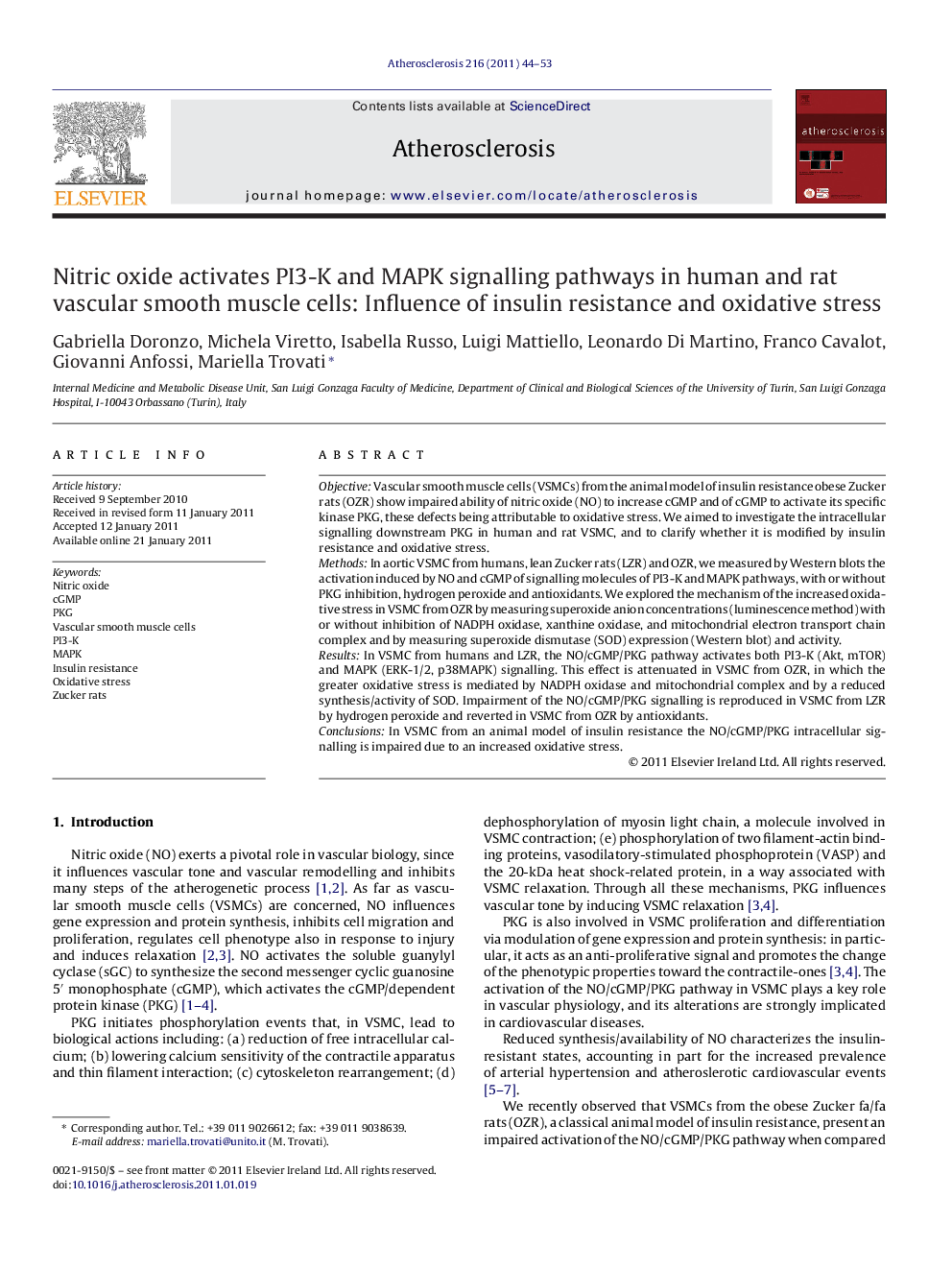| Article ID | Journal | Published Year | Pages | File Type |
|---|---|---|---|---|
| 5949686 | Atherosclerosis | 2011 | 10 Pages |
ObjectiveVascular smooth muscle cells (VSMCs) from the animal model of insulin resistance obese Zucker rats (OZR) show impaired ability of nitric oxide (NO) to increase cGMP and of cGMP to activate its specific kinase PKG, these defects being attributable to oxidative stress. We aimed to investigate the intracellular signalling downstream PKG in human and rat VSMC, and to clarify whether it is modified by insulin resistance and oxidative stress.MethodsIn aortic VSMC from humans, lean Zucker rats (LZR) and OZR, we measured by Western blots the activation induced by NO and cGMP of signalling molecules of PI3-K and MAPK pathways, with or without PKG inhibition, hydrogen peroxide and antioxidants. We explored the mechanism of the increased oxidative stress in VSMC from OZR by measuring superoxide anion concentrations (luminescence method) with or without inhibition of NADPH oxidase, xanthine oxidase, and mitochondrial electron transport chain complex and by measuring superoxide dismutase (SOD) expression (Western blot) and activity.ResultsIn VSMC from humans and LZR, the NO/cGMP/PKG pathway activates both PI3-K (Akt, mTOR) and MAPK (ERK-1/2, p38MAPK) signalling. This effect is attenuated in VSMC from OZR, in which the greater oxidative stress is mediated by NADPH oxidase and mitochondrial complex and by a reduced synthesis/activity of SOD. Impairment of the NO/cGMP/PKG signalling is reproduced in VSMC from LZR by hydrogen peroxide and reverted in VSMC from OZR by antioxidants.ConclusionsIn VSMC from an animal model of insulin resistance the NO/cGMP/PKG intracellular signalling is impaired due to an increased oxidative stress.
